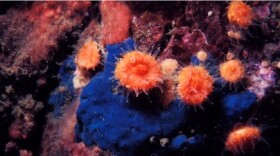Oyster growers on the Washington coast will have a chance to convince regulators to let them use a controversial pesticide to control native burrowing shrimp. The shrimp can infest oyster beds and turn them into quicksand. Members of the Willapa Bay Grays Harbor Oyster Growers Association say they’ve lost hundreds of acres of tidelands to the problem.
In 2015, the Department of Ecology approved conditional use of imidacloprid, a common agricultural insecticide that had never before been permitted for use in the water. A neurotoxin in the class known as neonicotinoids, it has been linked to bee colony collapse. It paralyzes the shrimp and causes them to suffocate.
After much public outcry, the growers withdrew from their original permit and then came back with a scaled back permit application in 2017. This April, Ecology denied that permit.
The growers appealed, saying the science hasn’t changed and they think their proposed use of imidacloprid is safe.
Kathleen Nisbet Moncy, chief operating officer at family-run Goose Point Oysters, says the decision was political and should be based on science.
“There’s been no science that’s come out that would prove that there is a reason why they should not reissue this permit for us to be able to utilize the treatment process,” she said.
Moncy says after nearly a decade of research at several institutions, at a cost of several million dollars, imidacloprid is the only solution that emerged. The growers applied for a five-year permit.
“It could either be a bridge to something else or it could be something that we may have to use for another five years,” she said, adding they continue to research many other methods. “And if there’s anything else that comes up, that would be of a better use to be able to solve this, we will 100 percent be on board with moving forward."
Rich Doenges, the section manager at the state Department of Ecology says the science did change, quite rapidly, between the two permit applications. He says a new risk analysis from the EPA showed indirect impacts to fish and birds, high mortality in Dungeness crab, and lots of general uncertainty about the long-term impacts of imidacloprid.
“There’s been a huge number of studies around the world and here in the United States that have shown that imidacloprid persists more than we originally understood and that it causes impacts on invertebrates nervous systems at much lower levels than we understood,” he said.
And as they were preparing a response to the latest permit application, Doenges says new papers about imidacloprid were coming in so fast, he sometimes had to ask staff to seriously consider whether it was worth looking at as they struggled to finalize their response.
“There’s just been a lot of research going on, in the States and around the world. Because of the concern – or the data — indicating a linkage between imidacloprid and other of these neonicotinoid pesticides with bee colony collapse, it was a hot research topic," he said. "And so there’s been a lot more information that comes out, almost every month."
Starting Sept. 9, 2019, the oyster growers will have up to 10 days to make their case. They say some companies are already struggling to survive because of shrimp infestations. And a light-touch approach with imidacloprid is their only current solution.








